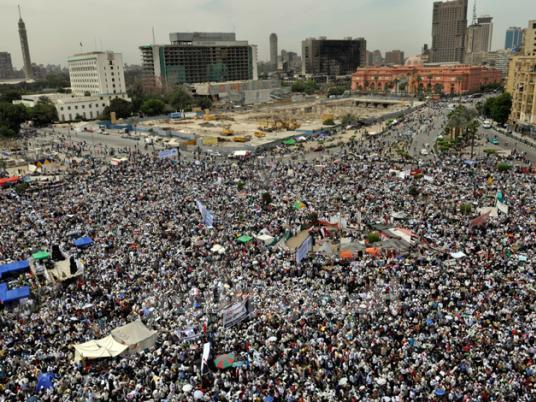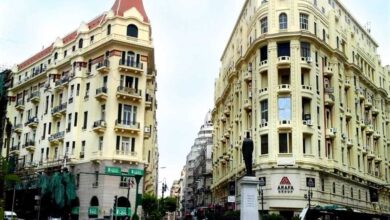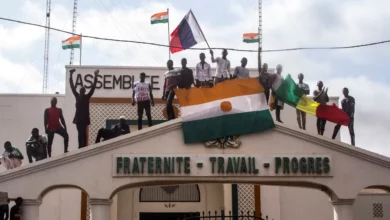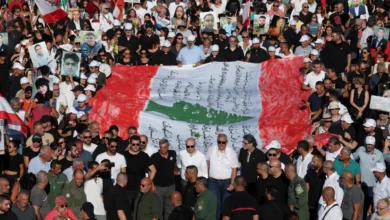
Thousands of protesters began to withdraw from Tahrir square Friday evening, after leaders announced the end of the day of protest that brought thousands of supporters of Islamist movements to the streets.
Some protesters remained around the main stage at the square, continuing to chant anti-SCAF slogans.
Members of Freedom and Justice Party, the political arm of the Muslim brotherhood, who came from other governorates this morning, boarded buses to return home.
By Friday afternoon, Tahrir Square was filled after large marches starting from several mosques joined demonstrators.
The Muslim Brotherhood called for a massive demonstration in the square to "protect the revolution" and demand that former regime figures be disqualified from the presidential race.
The first march started at Istiqamah Mosque in Giza and was the largest march of the four. The second began at Sayeda Zeinab Mosque in the Sayeda Zeinab neighborhood of Cairo. The marchers chanted “We won’t betray the martyrs’ rights.”
The third march departed from Fatah Mosque in Ramses Square in downtown Cairo while the fourth began at Mostafa Mahmoud Mosque in Mohandiseen.
The four marches converged in Tahrir, the most famous square in Egypt and the birthplace of the 18-day uprising that ousted former President Hosni Mubarak.
Among the protesters' demands were preventing former regime officials from running in the presidential elections, especially former Vice President Omar Suleiman, and cancelling Article 28 of the Constitutional Declaration which states that decisions of the Presidential Elections Commission cannot be challenged.
The number of protesters reached tens of thousands by midday and included people from various Islamist factions.
The protesters chanted, "Down with military rule," " We are the people — the red line," and "Suleiman, your place is in jail."
Members of the Brotherhood and Salafis started to flock to Tahrir in the morning. Al-Ahram reported that hundreds of protesters from different governorates arrived in Tahrir at around 10 am.
The protesters set up two stages in the square, a main stage located near Tahrir Street, and a smaller one belonging to presidential hopeful Hazem Salah Abu Ismail's supporters in the middle of the square.
Abu Ismail's supporters demanded that Abu Ismail be allowed to run in the presidential poll, after a court ruling compelled the Interior Ministry to prove that his mother was officially registered as a dual citizen.
Banners have been hung in the square reading: "No to the Zionists' candidate," "No to the nomination of Major General Omar Suleiman," and "No to Article 28 of the Constitutional Declaration."
Also a number of movements taking part in the protest raised banners bearing their names, including Ahl al-Sunna wal Jama’a and the Salafi Front.
Among the movements who took part in the demonstration were the Muslim Brotherhood and its Freedom and Justice Party, Jama’a al-Islamiya and its Construction and Development Party, the Salafi Asala Party, the Wasat Party, and the Amal (Labor) Party.
Among the movements that refused to participate are the April 6 Youth Movement, the Free Egyptians Party, the National Association for Change, the 25 January Revolution Youth Coalition, and the Revolutionary Youth Union.
Revolutionary youth movements said that they would not participate because the demonstration is part of an ongoing power struggle between the Muslim Brotherhood and the ruling military council, which has heated up since Suleiman’s candidacy was announced.
Translated from Al-Masry Al-Youm




